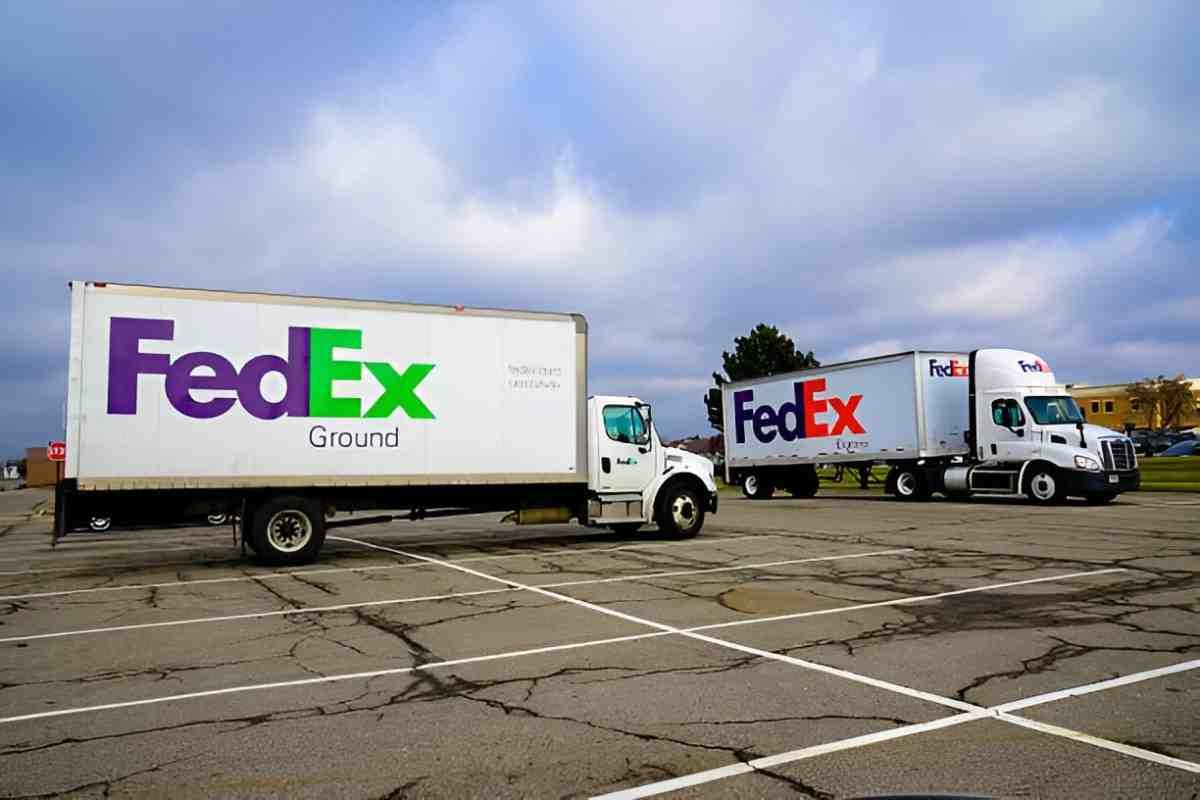When considering an investment, one of the first things I look at is the long-term stability and potential for steady returns. For many, owning a FedEx Ground route can seem like an attractive opportunity. With the rise of e-commerce and the ever-growing demand for delivery services, FedEx Ground routes promise a potentially lucrative business model. But before diving in, it’s essential to evaluate whether this investment is truly worth the money, time, and effort.
Table of Contents
What is a FedEx Ground Route?
A FedEx Ground route is a delivery business operated by an independent contractor, responsible for transporting packages from a FedEx hub to designated locations. As an owner of a FedEx Ground route, you would typically own or lease the trucks and employ drivers to handle the deliveries. This setup offers a relatively low barrier to entry, especially compared to starting a delivery service from scratch, but the question remains: is it a good investment?
The Key Factors That Affect FedEx Ground Route Investment
Several factors come into play when assessing the viability of investing in FedEx Ground routes. These factors include the cost of purchasing a route, operating expenses, revenue generation, market conditions, and, of course, the underlying risks. Let’s break each one down and look at how they influence potential returns.
1. Cost of Purchasing a FedEx Ground Route
The price of acquiring a FedEx Ground route can vary widely depending on a variety of factors. These factors include the geographical location, the size of the route (how many stops and deliveries are involved), and the existing customer base. On average, purchasing a FedEx Ground route can cost anywhere between $200,000 to $500,000 or more.
I’ve seen some routes priced even higher, especially in more urban areas with higher demand. It’s crucial to thoroughly evaluate the route’s history, including its financials, reputation, and its delivery performance. It’s not just about the price; it’s also about how much value the route will bring over time.
2. Operating Expenses
Operating a FedEx Ground route comes with several ongoing expenses. These include:
- Truck Lease/Ownership: The vehicles required for deliveries can either be purchased outright or leased. Purchasing may require a hefty upfront investment, but leasing allows for more flexibility. Typically, the cost of leasing a truck runs between $1,500 to $2,500 per month.
- Fuel Costs: Fuel is one of the largest ongoing expenses. With fluctuating fuel prices, this can vary, but on average, the cost of fuel for a route is around $1,000 to $2,000 per month.
- Driver Salaries: FedEx Ground contractors are responsible for hiring drivers. In most cases, driver wages range from $15 to $25 per hour, depending on location and experience. Drivers may work anywhere from 40 to 60 hours per week, so this can significantly impact profitability.
- Maintenance and Insurance: Maintaining the vehicles and carrying adequate insurance are additional costs that must be factored in. Insurance can cost around $500 to $1,000 per month per truck, and maintenance might cost a few hundred dollars each month.
3. Revenue Generation
One of the most attractive aspects of owning a FedEx Ground route is the potential for steady revenue. FedEx typically pays contractors based on the number of deliveries made, with rates varying depending on location and route specifics. For example, a route might generate anywhere between $80,000 and $150,000 annually before expenses, depending on its size and complexity.
However, it’s important to note that revenue can be subject to fluctuations. Economic conditions, the e-commerce landscape, and competition from other delivery services can all impact demand.
Let’s say a typical route generates about $120,000 annually in revenue. Here’s a simplified breakdown of potential costs:
| Expense Category | Estimated Cost (Per Year) |
|---|---|
| Truck Lease (2 trucks) | $36,000 |
| Fuel Costs | $24,000 |
| Driver Salaries (2 drivers) | $80,000 |
| Maintenance & Insurance | $10,000 |
| Total Expenses | $150,000 |
In this example, expenses exceed revenue, making it a poor investment. But in practice, some routes are more profitable, and scaling the operation (adding more routes or optimizing the delivery process) can improve profitability.
4. Market Conditions and Location
The location of the route plays a huge role in determining its profitability. Routes in densely populated urban areas typically see higher package volumes and shorter travel times, making them more lucrative. Rural routes may generate less revenue, but the costs of operation (e.g., fuel and maintenance) may also be lower.
A good rule of thumb is that urban routes often have higher upfront costs but offer quicker returns, whereas rural routes may take longer to pay off but come with lower risks.
5. Risks and Challenges
Like any business, owning a FedEx Ground route comes with risks. The main risks include:
- Market Fluctuations: Changes in the economy, e-commerce trends, and competition from other delivery services like Amazon or UPS can all affect demand for deliveries.
- High Operating Costs: Rising fuel prices, maintenance expenses, and driver wages can eat into profits.
- Driver Shortages: FedEx Ground routes require reliable drivers, and there’s always a risk of driver turnover, which can disrupt operations.
- Dependence on FedEx: FedEx controls much of the route’s performance and service level expectations. If FedEx changes its contract terms, your business might be impacted.
Comparison: FedEx Ground Routes vs. Other Delivery Business Opportunities
When evaluating whether a FedEx Ground route is a good investment, it’s useful to compare it to other potential delivery business models. Here’s a brief comparison:
| Factor | FedEx Ground Routes | Independent Delivery Business | Amazon Delivery Service |
|---|---|---|---|
| Initial Investment | $200,000 to $500,000+ | $50,000 to $150,000 | $10,000 to $50,000 |
| Revenue Potential | $80,000 to $150,000/year | Varies widely | Varies widely |
| Operating Expenses | High (fuel, maintenance, insurance) | Moderate (fuel, vehicle costs) | Moderate (fuel, vehicle costs) |
| Control Over Operations | Limited (FedEx controls aspects) | High | Moderate (Amazon controls delivery times) |
| Risk Level | Moderate to High | High | Low to Moderate |
| Scalability | Moderate | High | High |
As you can see, FedEx Ground routes offer a stable, high-revenue opportunity but come with a higher investment. Independent businesses allow for more flexibility but carry greater risks. Amazon delivery services have a lower barrier to entry and moderate risks but may not generate as high returns as a well-established FedEx route.
Key Considerations for Potential Investors
Before purchasing a FedEx Ground route, there are several critical points I recommend evaluating:
- Evaluate Existing Financials: Look at the financial performance of the route you are interested in. Understand the revenue generation patterns and the potential for future growth.
- Assess the Contract Terms: Understand the contract terms with FedEx, including payment schedules, service level agreements, and potential risks tied to FedEx’s policies.
- Consider Operational Efficiency: How efficient are the current operations? Look for ways to optimize routes, reduce fuel costs, and maintain vehicles more cost-effectively.
- Explore Financing Options: Given the substantial cost of acquiring a FedEx Ground route, consider various financing options, including loans, to help with the initial investment.
- Prepare for Long-Term Commitment: While owning a FedEx route can be profitable, it requires hands-on management, overseeing drivers, and ensuring that service levels are maintained. Be ready for a long-term commitment if you choose to pursue this investment.
Final Thoughts: Is a FedEx Ground Route a Good Investment?
In conclusion, FedEx Ground routes can be a lucrative investment, but they are not without their challenges. The high initial cost, along with ongoing operating expenses, requires careful consideration. For investors who are prepared for the responsibility and can manage the operational aspects of the business, a FedEx Ground route can offer solid returns. However, those looking for a more passive investment might want to explore other options.
The decision to invest in a FedEx Ground route ultimately comes down to the investor’s ability to handle the financial, operational, and market risks involved. By thoroughly analyzing the route, understanding the financials, and carefully managing the business, owning a FedEx Ground route could very well be a worthwhile investment.





